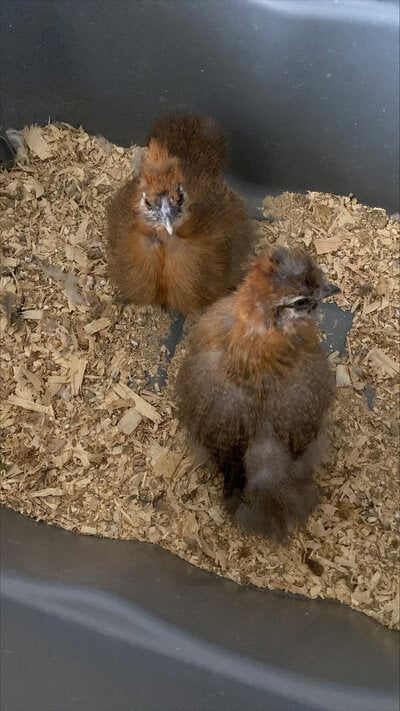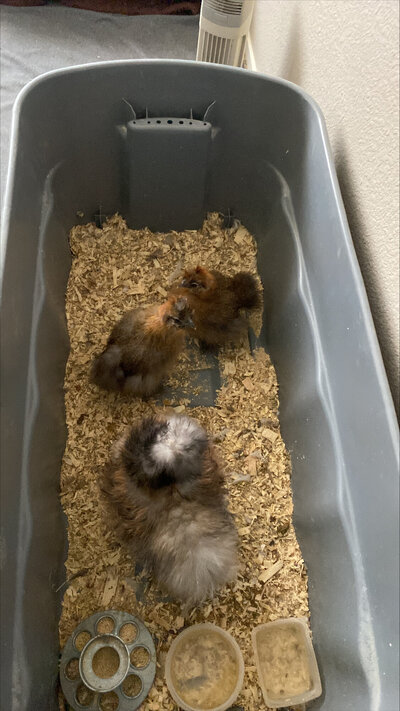I Like Turkeys
Crowing
Probably not exactly like him. When you cross to the RIR, you lose a lot of genes. Crests will be smaller, foot feathering will be more sparse, polydactily will be all over the place if there, tails will be longer, combs different, and general body shape off.AMAZING!!! Thank you for such a detailed explanation! This is very helpful!!
Other than colour, the other obstacle is breeding to the Silkie SOP. So if the starting buff male is a silkie adhering “perfectly” to the SOP (theoretically), I could still theoretically get reds that look more like him with your 50% offspring calculation)?
These are the f1 crosses; when you breed two of them together to get your f2 crosses, you have the potential to gain back, keep the same amount, or further loose the genes of the silkie.
For this reason, backcrossing to silkies, even if you loose color for a generation, is important to improve the type of the birds. The color can always be gained back if your birds are heterozygous for the dilution gene, but given the many other genes affecting silkie type, that’s a bit more tricky to get back unless you relentlessly test breed or keep records of birds, in which case it'd also be difficult if possible.



